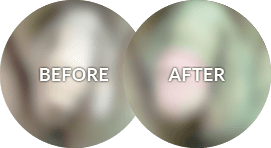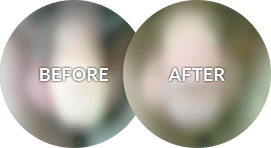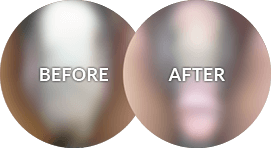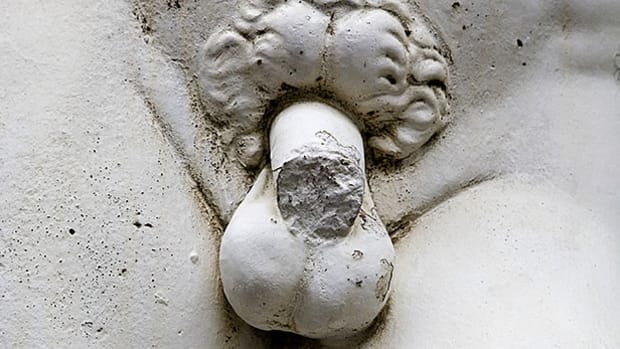Circumcision is one of the oldest and most common surgical procedures in written history. Cultural and religious significance inspires different forms of the surgery. Some communities perform traditional circumcision where specialized individuals conduct the procedure in non-medical settings. In contrast, others opt for medically supervised circumcision performed by surgeons or other healthcare providers in a clinical setting.
Dr. Mo Bidair specializes in highly personalized adult circumcision surgery. A board-certified urologist and circumcision expert, Dr. Bidair utilizes his skills and medical training to help his patients attain the results they are looking for. Getting circumcised as an adult is an important decision that should not be taken lightly, and he understands deeply your internal perception about the process.
If you seek comprehensive urological care and a customized treatment plan, call our office near San Diego at (619) 486-5005 or fill out this form to schedule a private consultation.
Contents
- 1 Cultural Circumcision
- 2 Religious Circumcision
- 3 What is Adult Circumcision?
- 4 Patient Recovery & Results
- 5 How Much Does Adult Circumcision Cost in La Mesa/San Diego?
- 6 FAQ
- 6.1 Are there cultural or religious communities that routinely perform circumcision?
- 6.2 Can I undergo adult circumcision for non-religious reasons?
- 6.3 How does circumcision contribute to cultural identity markers and family heritage?
- 6.4 When can I have my stitches removed after adult circumcision?
- 6.5 Am I a good candidate for adult circumcision?
- 7 References
Cultural Circumcision
Circumcision is an ancient practice with a rich history and anthropological significance. Its roots date back thousands of years and can be traced across various cultures and regions worldwide. Both Islamic and Jewish faiths consider circumcision to be an important part of religious practice and beliefs. However, over the centuries, many ethnicities have performed it as a cultural rite as opposed to a religious one. In fact, some of the earliest known depictions of circumcision come from Ancient Egypt and date back to the Eighth Dynasty. It is now known that circumcision originated much earlier than that in the deserts of what is now the Middle East. Ancient peoples living in modern Lebanon, Ethiopia, and Turkey all practiced circumcision as a cultural and ethnic ritual. (1)
Circumcision right before the start of puberty is believed to be a “blood sacrifice” or an introduction to the responsibilities of adulthood in certain cultures and ethnic groups. Many ancient tribes, including Polynesian and Aboriginal peoples, received circumcision as a rite of puberty and an indication of “manhood.” This ritual typically used seashells to remove the young male’s foreskin, then the participant would squat for several hours over smoke from a fire that was covered by eucalyptus. Today’s tribal descendants still participate in this ritual, with a few modern alterations. (1)
In many African countries, medical professionals consider circumcision an effective weapon against the spread of HIV/AIDS. A massive push for adult circumcision in the area ensued, wherein adult male patients volunteered to receive the procedure to help prevent the transmission of HIV. This tactic is not popular in North America, but as adult circumcision rates drop, more adult males in Africa and the rest of the world seek the procedure for purely cosmetic reasons. (2)
Religious Circumcision
Judaism
In Judaism, circumcision is a ritual that males must complete in order to participate fully in their religion. Infant males receive circumcisions on the eighth day of life. Known as the brit milah, or briss, this is a sacred ritual also referred to as the “covenant of circumcision.” A Mohel is a Jewish person trained in performing this ritual, and it traditionally takes place in a synagogue. Abraham in the Hebrew Bible states that “every male among you should be circumcised.” It is a rite of passage within Jewish religion, culture, and ethnicity that represents their entering into the covenant of Israel. (3)
Men who are converting to Judaism as adults receive this ritualistic circumcision to symbolize their faith and receive a portion of the “World to Come,” or the Judaic afterlife. Since brit milah typically involves an infant, the mohel does not use anesthetic. When an adult male partakes in this ritual, the circumcision is private. A Mohel must perform it according to Jewish law and tradition, even for adult males. (3)
Islam
Circumcision is an important part of the Islamic faith. Muslims consider this procedure an act of cleanliness that falls within Fitrah, an Arabic term that represents the natural character, instinct, and disposition of human creation. Anybody that is qualified to perform circumcision can carry out this procedure as it is not considered a religious ceremony in the Islamic faith.
Circumcision is written about in the Qur’an as an “indication of the law of the Lord.” Muslim infant males receive this procedure within 7 days of birth, but it can also take place within the first 40 days of the infant’s life or before they reach puberty. (4)
Modern Islamic circumcision typically takes place in a hospital, which differs greatly from Jewish tradition. The process is sterile and involves medical personnel.
What is Adult Circumcision?
Adult circumcision can be for religious, cultural, social, or nontherapeutic reasons. Depending on the patient’s preferences, this can look like partial or complete removal of the foreskin. Dr. Bidair creates a customized procedure plan that compliments your anatomy and meets your cosmetic desires.
He utilizes individualized techniques to achieve optimal results for each patient. A “low cut” circumcision results in an incision close to the head, whereas a “high cut” procedure is the opposite. Dr. Bidair then sutures or cauterizes the remaining skin to complete the procedure. He determines which technique works best for your circumstances during a private consultation.
Types of Adult Circumcision
Adult circumcision is a safe and effective procedure that benefits patients in many facets of life. Whether or not you choose to receive the procedure for religious or cultural reasons, it also provides cosmetic and hygienic benefits.
The types of adult circumcision that Dr. Bidair performs are:
Patient Recovery & Results
Though more complicated than infant circumcision, the recovery process after this procedure is typically short and simple. It is an outpatient surgery, so you will go home soon after Dr. Bidair is finished. You will experience some swelling and possible bruising in the first week of recovery. There will likely be bandaging around the treatment area, so be sure to keep this dry and clean until its removal. A common recovery period lasts from 2 to 3 weeks. After about 1 month, Dr. Bidair may clear you for regular activities and exercise depending on your condition. Please refrain from sexual intercourse and masturbation for up to 3 weeks after your circumcision. Your results depend on the chosen techniques and aesthetic specifics of your treatment plan. You may take a look at our before & after photographs of past patients to get a better idea of your potential results.
How Much Does Adult Circumcision Cost in La Mesa/San Diego?
Each patient receives a personalized procedure plan from Dr. Bidair. To fully understand your custom cost, please schedule an appointment at California Adult Circumcision today. Fill out our contact form or call us directly at (619) 486-5005 for more information.
Are you curious about other reasons that adults undergo circumcision? Read our additional blog entries to learn more.
FAQ
Are there cultural or religious communities that routinely perform circumcision?
Yes, many cultural and religious communities practice circumcision as a ritualistic practice, rite of passage, religious obligation, or cultural tradition. Examples include Jewish, Islamic, Filipino and African communities, among others. Understanding these practices can shed light on the cultural and religious significance of circumcision.
Can I undergo adult circumcision for non-religious reasons?
Yes. Many men decide to get circumcised due to cosmetic and social reasons as well. This procedure also reduces your risk of getting STIs or developing other medical issues in the treatment area.
How does circumcision contribute to cultural identity markers and family heritage?
Circumcision can serve as a cultural identity marker by distinguishing individuals within their ethnic, cultural, or religious communities. It may also play a role in preserving family heritage and traditions across generations.
When can I have my stitches removed after adult circumcision?
If the surgery places dissolvable sutures, then you will not require removal. Generally, it takes approximately 7 to 10 days for incisions to heal. Dissolvable stitches will fall out after 10 to 14 days.
Am I a good candidate for adult circumcision?
You should be in good overall health with no underlying medical conditions to be an ideal candidate for this procedure. You must also have an intact foreskin or the desire to revise a previous circumcision.
References
- Doyle D. Ritual male circumcision: a brief history. The Journal of the Royal College of Physicians of Edinburgh. 2005;35(3):279-285. Accessed April 24, 2024. https://pubmed.ncbi.nlm.nih.gov/16402509/
- Collier R. Late cuts: An International Look at Adult Circumcision. Canadian Medical Association Journal. 2011;184(1):E15-E16. doi:https://doi.org/10.1503/cmaj.109-4013
- Anwar MS, Munawar F, Anwar Q. Circumcision: a Religious Obligation or “the Cruellest of Cuts”?. British Journal of General Practice. 2010;60(570):59-61. doi:https://doi.org/10.3399/bjgp10x482194
- Kacker S, Tobian AAR. Male Circumcision: Integrating Tradition and Medical Evidence. The Israel Medical Association Journal : IMAJ. 2013;15(1):37-38. Accessed April 24, 2024. https://www.ncbi.nlm.nih.gov/pmc/articles/PMC3638798/





